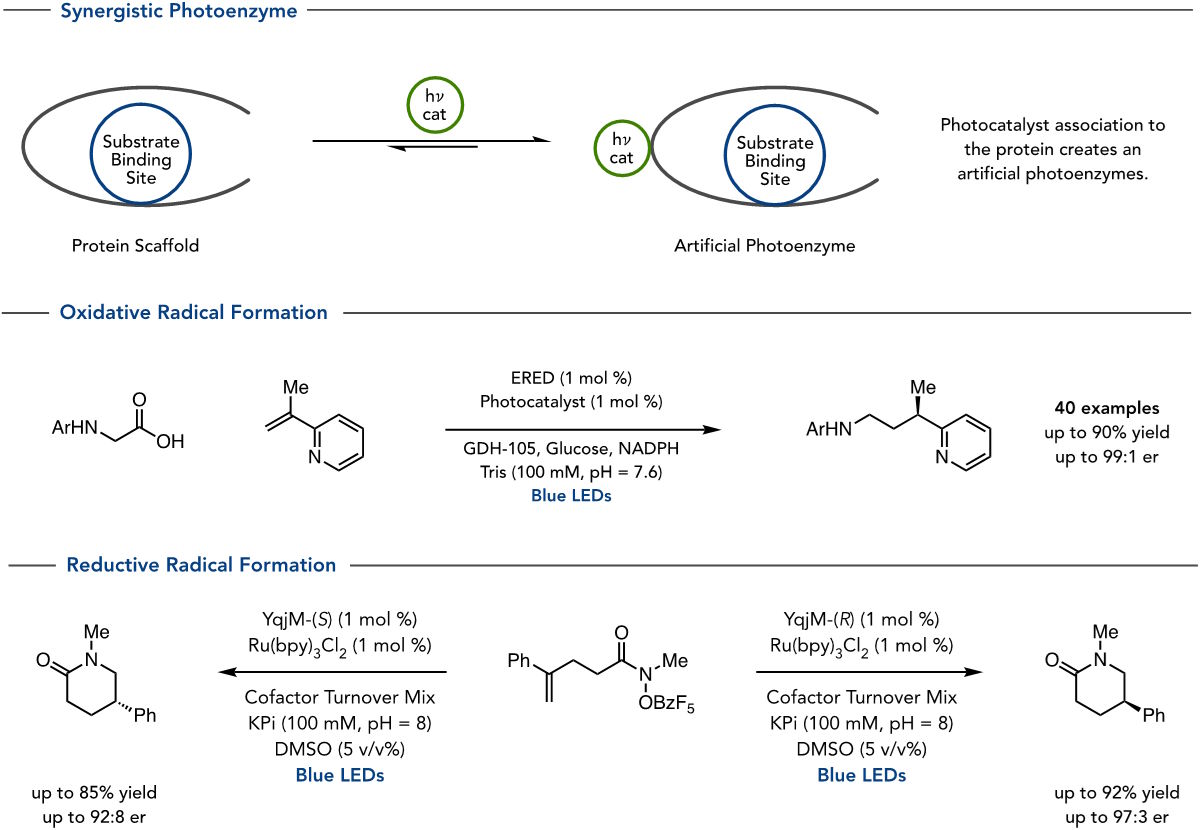-

Photoenzymatic catalysis for selective chemical synthesis.
Read more: Photoenzymatic catalysis for selective chemical synthesis.While light is a powerful stimuli for generating highly reactive intermediates, nature rarely uses it to drive reactions within individual enzymes. In the Hyster group, we have found that many enzymes commonly used by synthetic chemists have latent photochemical functions. By irradiating cofactor-dependent enzymes with light, we can unlock new catalytic functions that were not previously unknown for these enzymes. When subjected to directed evolution, these catalysts can solve long standing challenges in chemical synthesis.
-

Synergistic photoenzymatic catalysis.
Read more: Synergistic photoenzymatic catalysis.Exogenous photocatalysts can be synthesized with bespoke characteristics that would be challenging to achieve using a protein alone. We are preparing enzyme/photocatalysts hybrids to generate reactive radical intermediates within protein active sites.
-

Enzyme/Small Molecule cascade reactions.
Read more: Enzyme/Small Molecule cascade reactions.Nature uses numerous enzymes in sequence to prepare complex molecules in what is referred to as a cascade reaction. This is possible because enzymes operate under similar reaction conditions. However, these conditions are often quite different from ones used by small molecule catalysts. In the Hyster group, we are developing small molecule catalysts that can operate in the presence of enzymes to develop new enzyme/small molecule cascades which enable unique reactivity modes that could not be achieved using either alone.


